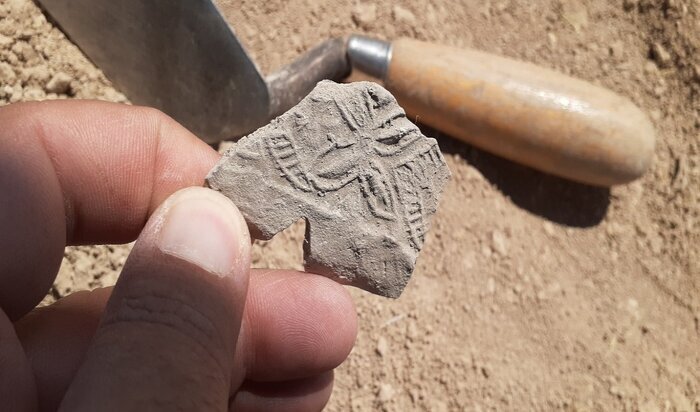Amazing archaeological finds dating back to Elamite era unearthed in western Iran

TEHRAN—Archaeologists in western Iran have found over 1,000 clay seals (and fragments) along with other “important” relics estimated to date from the Elamite era (3200–539 BC).
“We unearthed arrays of important objects such as over 1,000 clay seals while conducting an urgent excavation on an archaeological hill in Kermanshah province,” IRNA quoted archaeologist Shokouh Khosravi as saying on Monday.
Moreover, a number of earthen animal figurines and counting objects belonging to the early Elamite culture have been discovered in these excavations, Khosravi, who leads the excavations said.
“Those objects are unique in their kind in western Iran,” she said.
The archaeologist said those findings mark the first archaeological materials of the Elamite period in the west of the central Zagros region
“The finding triggers fundamental changes in our understanding and knowledge about the situation of western Iran in the fourth millennium BC,” Khosravi stated.
During the excavation, which is authorized by the Research Institute of Cultural Heritage and Tourism, a large number of clay door locks, hundreds of pieces of container seals, and a cylinder seal were also found, which shows the site was an administrative center for organizing economic and exchange affairs in the early Elamite period, she explained.
“As the excavations continue, more information will be obtained about the nature and absolute history of settlement on the site.”

Experts say the Kermanshah region has had one million years of archaeological continuity, which is due to the geographical features such as a high number of springs and fertile soil.
Elam, or the Elamite kingdom, was one of the most impressive civilizations of the ancient world. Its territory was once in a region, which is now situated in the modern Iranian provinces of Ilam and Khuzestan.
However, according to sources, it was never a cohesive ethnic kingdom or polity but rather a federation of different tribes governed at various times by cities such as Susa, Anshan, and Shimashki until it was united during the Middle Elamite Period, briefly, as an empire.
The name Elam was given to the region by others– the Akkadians and Sumerians of Mesopotamia–– and is thought to be their version of what the Elamites called themselves– Haltami (or Haltamti)– meaning “those of the high country.” 'Elam', therefore, is usually translated to mean“highlands” or “high country” as it comprised settlements on the Iranian Plateau that stretched from the southern plains to the elevations of the Zagros Mountains.
Susa was formerly the capital of the Elamite Empire and later an administrative capital of the king of Achaemenian Darius I and his successors of 522 BC. Throughout the late prehistoric periods, Elam was closely tied culturally to Mesopotamia. Later, perhaps because of domination by the Akkadian dynasty (c. 2334–c. 2154 BC), Elamites adopted the Sumero-Akkadian cuneiform script.
Documents from the second period, which lasted from the 16th to the 8th century BC, are written in cuneiform; the stage of the language found in these documents is sometimes called Old Elamite. The last period of Elamite texts is that of the reign of the Achaemenian kings of Persia (6th to 4th century BC), who used Elamite, along with Akkadian and Old Persian, in their inscriptions. The language of this period, also written in the cuneiform script, is often called New Elamite.
Although all three stages of Elamite have not been completely deciphered, several grammatical features of the language are known to scholars. These include a plural formation using the suffix -p, the personal pronouns, and the endings of several verb forms.
Elamite language is an extinct language spoken by the Elamites in the ancient country of Elam, which included the region from the Mesopotamian plain to the Iranian Plateau. According to Britannica, Elamite documents from three historical periods have been found. The earliest Elamite writings are in a figurative or pictographic script and date from the middle of the 3rd millennium BC.
AFM
Leave a Comment